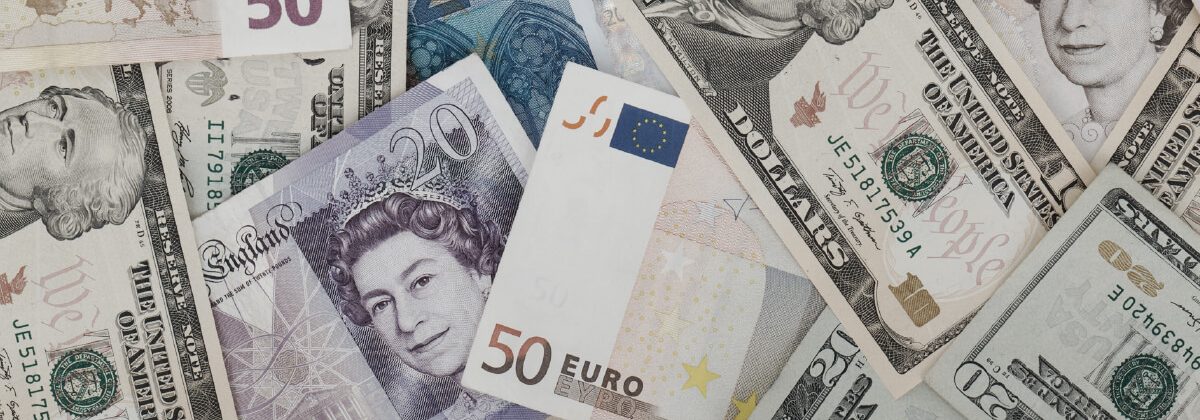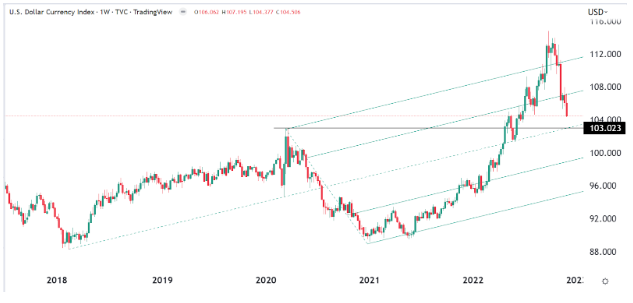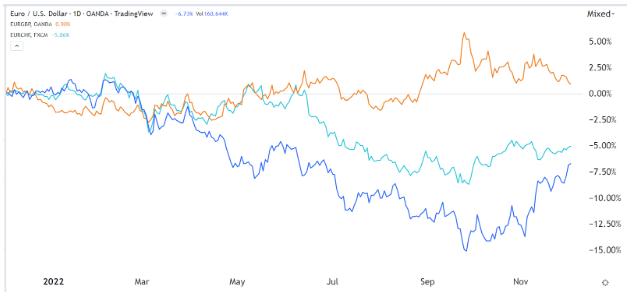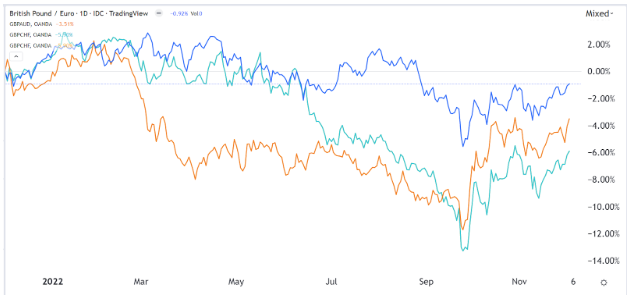2023 Forex Outlook: US Dollar, Euro, British Pound

The forex market in 2022 was characterised by an extremely strong US dollar as investors embraced a risk-off sentiment. The US dollar index surged to a multi-decade high of $115 as the greenback surged against most currencies. In this article, we will explore the outlook of some of the top active currency pairs in 2023.
2023 forex themes
The forex market will react to several events in 2023. The most important will be the actions of central banks like the Federal Reserve (Fed), European Central Bank (ECB), Bank of Japan (BoJ), and the Central Bank of Turkey (CBRT). Most central banks are expected to either pause their aggressive policies or even start undoing some of the hikes they made in 2022.
Secondly, currencies will react to the Russia-Ukraine crisis. The crisis had major impacts in the forex market as it played a key role in global inflation since the two are major players in agricultural and energy commodities. Russia is the biggest wheat exporter in the world while Ukraine is one of the biggest players in sunflower and other grains.
Thirdly, the forex market will be impacted by geopolitical issues, especially between the US and China. These tensions have continued in the past few months as the two battle for supremacy on the world stage. In 2022, the US directed its big semiconductor companies to halt sale of some their most advanced products to Chinese companies. Many American companies in China like Apple are also working to diversify their manufacturing out of China. Also, the main geopolitical issue between the two countries is regarding Taiwan and China’s plan to annex.
Other themes to watch in 2023 will be fears of a global recession, inflation trends, and actions by national governments.
US dollar outlook
The US dollar surged to a multi-decade high in 2022 as investors embraced a risk-off sentiment in the market. The closely-watched dollar index surged to $115, the highest level in more than two decades. At its peak, the index was about 28% above the lowest level in 2021.
The key DXY constituents that broke records in 2022 were the euro and the Japanese yen. The euro crashed below the parity level while the Japanese yen plunged below 150 for the first time in decades. In the UK, the British pound tumbled to the lowest level since the 1980s.
The US dollar surged for several reasons. First, the Federal Reserve implemented several interest rate hikes in a bid to fight the elevated inflation. Between January and November, the bank hiked rates by 400 basis points and reduced its balance sheet through the quantitative tightening process.
Second, inflation in the US surged to the highest level in decades. This increase happened as gasoline prices surged to $5 and as supply chain challenges remain. The situation will likely change in 2023 since the world is addressing some of the challenges it experienced in 2022.
Further, the dollar rallied because of the rising global risks, which included the crisis in Ukraine and other geopolitical issues.
Looking forward, there is a possibility that the US dollar index will retreat in 2023 as investors move to embrace a risk-on sentiment. On the weekly chart, the index is nearing the important support at $103, which was the highest point on March 2020. It is also approaching the middle line of the Andrews Pitchfork indicator. Therefore, the index will likely drop and retest the support at $100 in 2023.

Euro outlook for 2023
The euro came under intense pressure in 2022 as the European Union suffered its biggest energy shock in decades. Before the Ukrainian war, Russia was the biggest energy supplier to most countries like Germany and Spain. Therefore, by limiting the volume of gas it sells to Europe, Russia changed the bloc’s energy mix.
Europe’s inflation jumped to more than 10% in November 2022. As inflation surged, the European Central Bank (CB) hiked interest rates by 200 basis points and officials expect to deliver more hikes in 2023. The challenge is that hiking rates during a stagflation could lead to more severe challenges for the economy.
Analysts at Unicredit believe that the euro will do better than the US dollar and the Swiss franc in 2023. They wrote that:
“We expect the USD to further loosen its grip over the next two years as the Fed is set to cut rates in 2024 at a more intense pace than the ECB. We thus expect a narrowing of the differential between the US Fed funds rate and the ECB depo rate, which will be consistent with a higher EUR-USD exchange rate.”
The chart below shows the performance of the euro against the British pound and Swiss franc in 2022.

British pound
The British pound declined sharply in 2022 as concerns about the UK economy continued. Data published during the year and estimates show that the UK economy will have the second-slowest recovery in the G20 after Russia.
Sterling also declined sharply because of the political crisis in the country. In 2022, the country had three prime ministers: Boris Johnson, Liz Truss, and Rishi Sunak. Truss, who lasted for about 45 days proposed major tax cuts that led to major shocks in the economy.
The GBP/USD also slipped as inflation remained a major challenge in the country. Inflation rose to 11.1% in October, the highest level in decades. Excluding the energy subsidies, analysts at Citi estimated that inflation would soar to 18% in 2023.
The Bank of England (BoE) responded to the soaring inflation by delivering several rate hikes. In 2023, the pound will likely remain under intense pressure amid a slowdown in economic recovery. However, some analysts expect that it is well-positioned in 2023. Analysts at HSBC wrote that:
“A bottoming in global growth dynamics and a stabilisation in yields may provide a better backdrop for risk appetite, which could further weigh on the USD. GBP has had a very strong tie to risk appetite in recent years, and so a rebound in global sentiment will also help to boost GBP from somewhat undervalued levels.”

Summary
The forex market was dominated by a very strong US dollar in 2022 as investors reflected on multiple risks. Barring any external factors, the US dollar may see a reversal in 2023.




